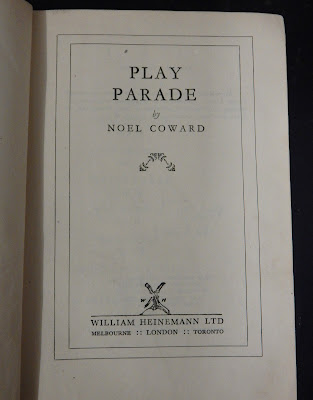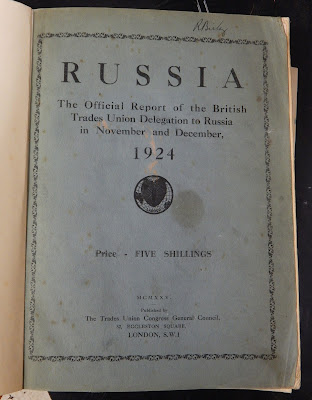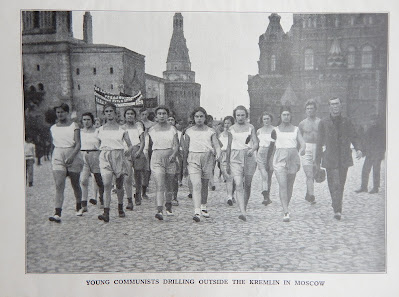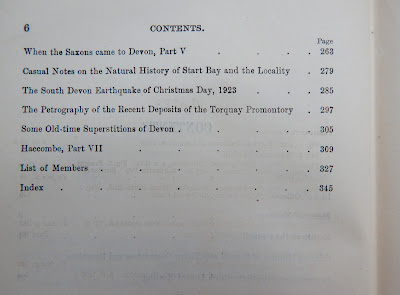Devon Libraries Centenary Collection: Part Two - Poetry, Plays and Non-Fiction
Well, we’ve had a look at the novels and short stories published in 1924, the year in which the Devon Library Service was established, which can be found down in the stacks. Let's now turn our attention to the poetry, plays and general non-fiction published or performed in that year.
The theatrical life of the time is represented by a number of playscripts we have. 1924 was a momentous year for Noel Coward. His play The Vortex premiered at the Everyman in Hampstead in November and soon became a success, creating a scandal, such a scandal with its story of an older woman mourning her fading glamour and her close relationship with her son, a cocaine addict. Coward’s international fame was assured the following year, with a West End production of Hay Fever and a Broadway run of Easy Virtue, both plays written in 1924. The Coward era had begun.
Things were happening over in France, with Paris serving as the focus of all manner of radical new art movements. 1924 was the year in which Andre Breton wrote the surrealist manifesto, and one of its signatories was Roger Vitrac. His 1924 play The Mysteries of Love is included in the anthology Modern French Plays. Also in there is Rene Daumal’s En Gggarrrde, whose wordplay and air of antic nonconformism was very much of a part with the Dadaist ethos then brewing. Daumal’s magnum opus, Mount Analogue, was a direct inspiration for Alejandro Jodorowsky’s 1973 film Holy Mountain, a countercultural classic and regular on the midnight movie circuit. There was a definite connection between the surrealist and dadaist art of the 20s and the anarchic creativity of the 60s. In some ways (and for all its adoption of Victorian and Edwardian styles) the 60s was the 20s reborn.
Arnold Bennett was chiefly known as a novelist, and he was a hugely popular one at the time. His stories were generally set in a lightly fictionalised version of the Staffordshire pottery towns, the Five Towns as he called them. In their realism and focus on ordinary working and lower middle-class lives and their setting in northern or midlands industrial towns, they anticipated elements of the kitchen sink movement of the 50s and early 60s. Bennett was a hugely prolific writer in many areas, and wrote a number of plays. One of these was London Life, which had a short run in the Drury Lane Theatre. It marked a shift away from his Staffordshire dramas. From now until his death in 1931, London life was indeed his major preoccupation.
Major new theatrical movements and styles were being formed on the European continent at this time, all part of the fragmentation and experiment of modernism in all the arts. In Italy, Luigi Pirandello produced Each in His Own Way in 1924. Like his earlier Six Characters in Search of an Author (1921) it is a play about a play, with a strong metaphysical undercurrent. This, and Pirandello’s work in general, would be an important part of what would come to be known as the theatre of the absurd. Pirandello was at this time a supporter of Mussolini, and a card-carrying member of the Fascist party. However, he renounced his membership in a very public fashion in 1927, and was a marked man from then on.
Bertolt Brecht was from the other end of the political spectrum, particularly later in the 20s when he became more self-consciously Marxist in his writing. At this point, he was very much a part of the Weimar theatre scene, combining experimentalism with popular forms (he was a big Chaplin fan). Edward II (or The Life of Edward II of England) was an adaptation of Christopher Marlowe’s Elizabethan play, turned into an epic with expressionistic elements. It was produced in the Munich Kammerspiele in March 1924.
Over the Atlantic in America, Eugene O’Neill was creating his own version of expressionistic theatre. All God’s Chillun Got Wings was his 1924 production, an indictment of racism. Although liberal in intent, it has been criticised for its stereotyped portrayal of African American characters. It’s certainly not one of his plays which was revived much subsequently (unlike, say, A Long Days Journey Into Night and Anna Christie, both of which were also filmed, the latter our second glimpse of Greta Garbo, one of the great icons of the age).
We have a great selection of poetry down in the stack, since it used to be one of the ‘special collection’ areas for the county; subjects (or author surname initials) in which county libraries would build up a significant stock which would then be available for inter-county loan. These include a number of poetry collections first published in 1924.
Susan Miles was the pen name of Ursula Wyllie Roberts. She was born into a military family in India before moving to England to live. She was committed to the Suffragist cause, publishing The Cause of Purity and Women’s Suffrage in 1912, and was also a supporter of women’s ordination (she was married to a member of the clergy). Her first volume of poetry, Dunch, was published in 1918 and was well-received. Her collection The Hares came out in 1924. She also wrote a verse novel, Lettice Delmer, which received praise from TS Eliot.
Edith Sitwell was the eldest of the Sitwell literary clan, all of whom were fabulously eccentric aristocrats. And none were more eccentric than Dame Edith, who was always resplendent in turban, voluminous velvet gown and maximal jewellery. Her appearance opened her up to mockery, and Noel Coward rather let himself down by joining the jeerers. After his cruel skit in his 1923 revue London Calling, she refused to talk to him for several decades. Her 1924 poetry collection Sleeping Beauty followed on from the success of her Facade poems which were set to music by William Walton, arrangements which were first performed in 1923. They have been popular in a variety of different versions ever since.
Humbert Wolfe is one of those writers who enjoyed a large public readership in his 1920s prime but who is little remembered today. The romantic temper of his poetry was in direct contrast to his career as a senior civil servant in the Board of Trade and the Ministry of Labour. His poems often had a London setting, as suggested by the title of his 1924 collection Kensington Gardens. It takes the form of a poetic tour around different sites and spectacles in the Gardens.
William Faulkner was one of the prime American novelists and a major 20th century literary figure. He had yet to establish this towering reputation in the early 20s however. The Sound and the Fury would be published at the end of the decade in 1929 and his first novel, Soldier’s Pay, in 1925. In the early 20s he had yet to graduate to novel-writing, however, focussing instead on short stories and poetry. His long-form verse sequence The Marble Faun was published in 1924 to little fanfare, and with little hint of things to come, but is of interest now in the light of his subsequent renown.
Edgar Lee Masters The New Spoon River Anthology was his 1924 follow-up to his immensely popular 1915 collection Spoon River Anthology. The original book was a sequence of poems which took the form of epitaphs to inhabitants of an imaginary town named after the Spoon River which runs through Illinois. It wasn’t fictional enough for some, however, since Masters very evidently based it on his hometown of Lewistown in Illinois, and the epitaphs on some of its inhabitants. The book was banned from the Lewiston public library for decades, its forbidden status only lifted in 1974. One of those on the library board who initially instigated the ban was Masters’ own mother! In the sequel, time has moved on and Spoon River has been absorbed into the urban sprawl of Chicago. Perhaps because of the loss of the romanticised small town focus, this failed to match the success, critical or popular, of the first anthology.
Pablo Neruda is generally considered to be one of the great poets of the twentieth century, and Chile’s national poet. He also served as a Chilean diplomat in a number of countries, and as a Communist Party senator in the post-war government. He wrote poetry from his early teens, and his 1924 volume, 20 Love Poems, was published when he was 19. It was the collection which established his reputation, and began the literary career which was so indelibly linked to the turbulent history of his country in the twentieth century. No pictures of this one I'm afraid - it's been out on loan for quite a prolonged period.
A Year of Prophesying collected newspaper columns which Wells had written for the Westminster Gazette and the New York Times amongst others. He looked at current social and historical events and extrapolated what he thought they might portend for the future. His Fabian socialist beliefs led to him to condemn both Mussolini and Hitler, firmly opposing fascism in its early days.
Alfred Adler was a Viennese doctor and psychologist who was one of the group which coalesced around Sigmund Freud in the early years of the twentieth century. The Wednesday Society which met on that day to discuss the developing psychoanalytic theories of Freud and contribute ideas which added to them was important in the formulation of Freud’s theories. It changed its name to the more formal Vienna Psychoanalytic Society in 1908, and Adler became its president in 1910, taking over from Freud. He left in 1911, however, the first of the group to dissent from elements of Freud’s theories. Adler’s 1924 book The Practice and Theory of individual Psychology outlines his own ideas, which centre around the individual’s development within the family and the drive towards social participation. It was Adler who came up with the idea of the inferiority complex, a term which became common 20th century coinage.
Mark Twain’s autobiography was published in 1924 in two volumes. He had dictated it in his declining years before his death in 1910, and it has the anecdotal quality of a conversational transcript. Parts had been published in the magazine North American Review, and the book gathered together about two fifths of the accumulated material. It wasn’t until 2010, the centennary of Twain’s death, that the full manuscript was published in three hefty volumes.
Sarah Bernhardt, the diva of the French stage who became a global star in the nineteenth century, had already written her autobiography My Double Life, which appeared in translation in 1908. Her book The Art of the Theatre was published posthumously in 1924. She had worked on it in her final years before her death in 1923. In it, she imparted her wisdom on the techniques of acting, gained from her considerable experience. She particularly emphasised the importance of vocal technique, and the exercises necessary for keeping the stage actor’s most important tool in good condition. As one of the genuine legends of theatrical history, any advice from the Divine Sarah is liable to be worthy of attention.
1924 was a significant year in the development of the new Soviet Republic of Russia. In January, the intellectual and political leader of the Bolshevik revolution, Vladimir Lenin, died. Later that year, a TUC delegation from Britain took up an invitation from the All-Russian Council of Trade Unions to visit the country and report back on what they found there. Appropriately enough, this was at the time of the first Labour government to be elected to power under the PM Ramsey Macdonald. The delegation to Russia included TUC General Secretary Fred Bramley, the leader of the docker’s union Ben Tillett and Arthur Purcell, who had been part of an earlier 1920 delegation. They visited Moscow, and also travelled out to the industrial areas of the Soviet Union, gaining an impression of the way in which the factories, mines and plants worked and also of the physical, cultural and intellectual activities which were provided. The booklet published as Russia: the Official Report of the British Trades Union Delegation to Russia and Caucasia Nov and Dec 1924 provides a fascinating glimpse of the revolutionary state in its early phase of development, albeit one filtered through the lens of an officially conducted tour laid on for those in ideologically sympathy. The pictures of healthy young Soviets marching athletically through the Moscow streets and earnest intellectuals bent towards each other in intense dialectic debate have the nostalgic air of that initial phase of idealism which inflamed so many radicals in the West.
In 1953 Joseph Stalin died, and by this stage it would take a dedicated delusionist to hold on to any of those ideals. I don't know whether the 17 Volume Complete Works of Joseph Stalin published for the English language readership in 1953 was printed before or after the death was announced. It would seem unlikely that such an inherently reverential enterprise would have been undertaken subsequently. The ‘De-Stalinisation’ of the Soviet Union began almost immediately, and in 1956 Khruschev gave his speech to the Party’s 20th Congress in which he denounced Stalin and the terror he had presided over. The collected writings of this monstrous man amount to an important series of historic documents, however. Volume 6 is entirely dedicated to the year 1924, and indicates that seeds of the dissolution of any genuine idealism were already there. These two books mark both a reflection of the seemingly hopeful utopianism of the early years and the horrific totalitarian oppression to come. The grim portents of the great mid-twentieth century ordeal.


























































Comments
Post a Comment